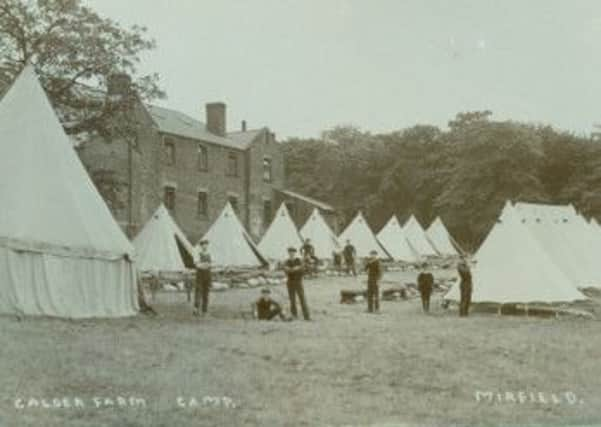Records reveal tough life for young offenders at Mirfield institution


Records from one of Yorkshire’s most notorious educational institutions have been made available to the public on popular family heritage website Ancestry.co.uk.
Calder Farm Reformatory, which stood in Sands Lane, Mirfield, was built in 1855 and by 1859 housed 110 boys of school age who had to go through a tough daily regime.
Advertisement
Hide AdAdvertisement
Hide AdMirfield historian Frances Stott said: “The school was run on a very strict basis, almost military.
“Every Sunday morning the boys would march on the fields, fronted by a bugle player, and they could be heard in the town.
“They were also made to work, with many going on to live and work with miners.”
But despite its strict regime, the reformatory was not without its troubles.
Advertisement
Hide AdAdvertisement
Hide AdA report in the Leeds Mercury from April 9, 1864 said Joseph Broadhead, a youth held in the reformatory, had tried to murder the schoolmaster’s wife.
It read: “Broadhead fastened a door leading into the schoolhouse, and then taking up a large knife used for cutting up loaves of bread for the boys, he went to the Johnsons and, rushing at the schoolmaster’s wife, attempted to stab her.”
The reformatory was set up after the government passed two Youth Offender Acts in 1854, requiring the Home Office to certify certain institutions in which to place not only juvenile offenders but also neglected or abandoned children.
Some of the children admitted to the school had displayed considerable cunning.
Advertisement
Hide AdAdvertisement
Hide AdTwelve-year-old Herbert Wells committed forgery and larceny after stealing an old chequebook from a local vet, faking his signature and drawing out significant funds.
Others were simply destitute, such as five-year-old William Judge, who was admitted after being found “wandering, not having any home or visible means of subsistence”.
The reformatory was decommissioned for a time but was recertified in 1916 to house 103 boys, with farmhouses adapted to accommodate the school. It finally closed in April 1922.
Despite its closure, many of the building’s original features remained for decades.
Advertisement
Hide AdAdvertisement
Hide AdFormer Mayor of Mirfield David Pinder, who grew up in the area, said: “It was derelict when I was a child, and I remember going to play there with my friends.
“There was still a swimming pool in the grounds until the 1970s – which is amazing really, as these days, health and safety would have a field day if they found a pool full of stagnant water where children were playing!”
The 36-acre site has since become part of Dewsbury and District Golf Club.
Visit www.ancestry.co.uk to find more records on young offenders at Calder Farm.
For more on the history of Mirfield, see Frances Stott’s book Mirfield, which is available from Batley Library. All proceeds from sales go to charity.